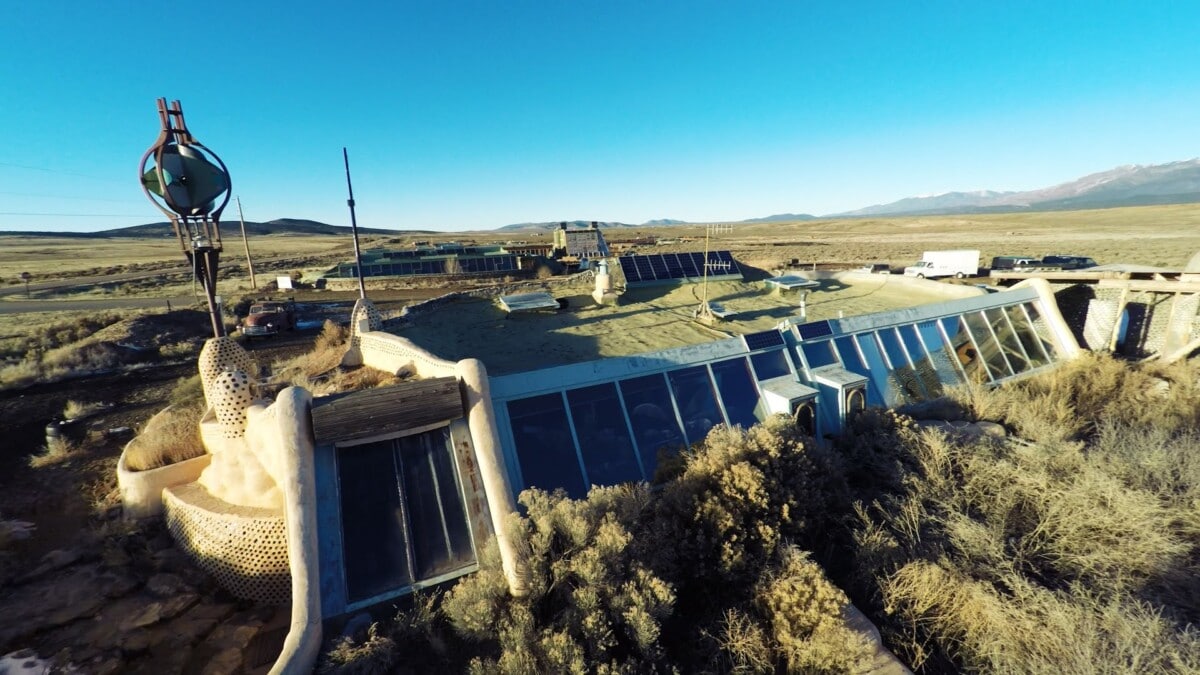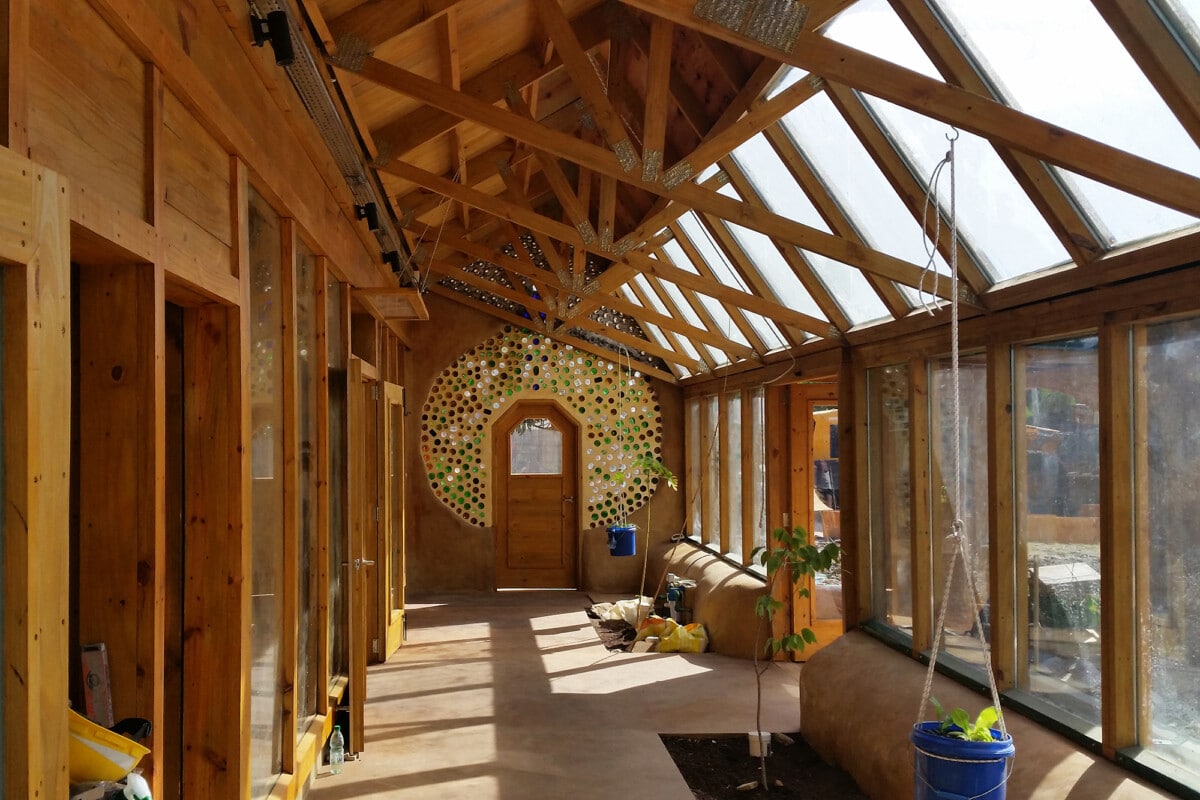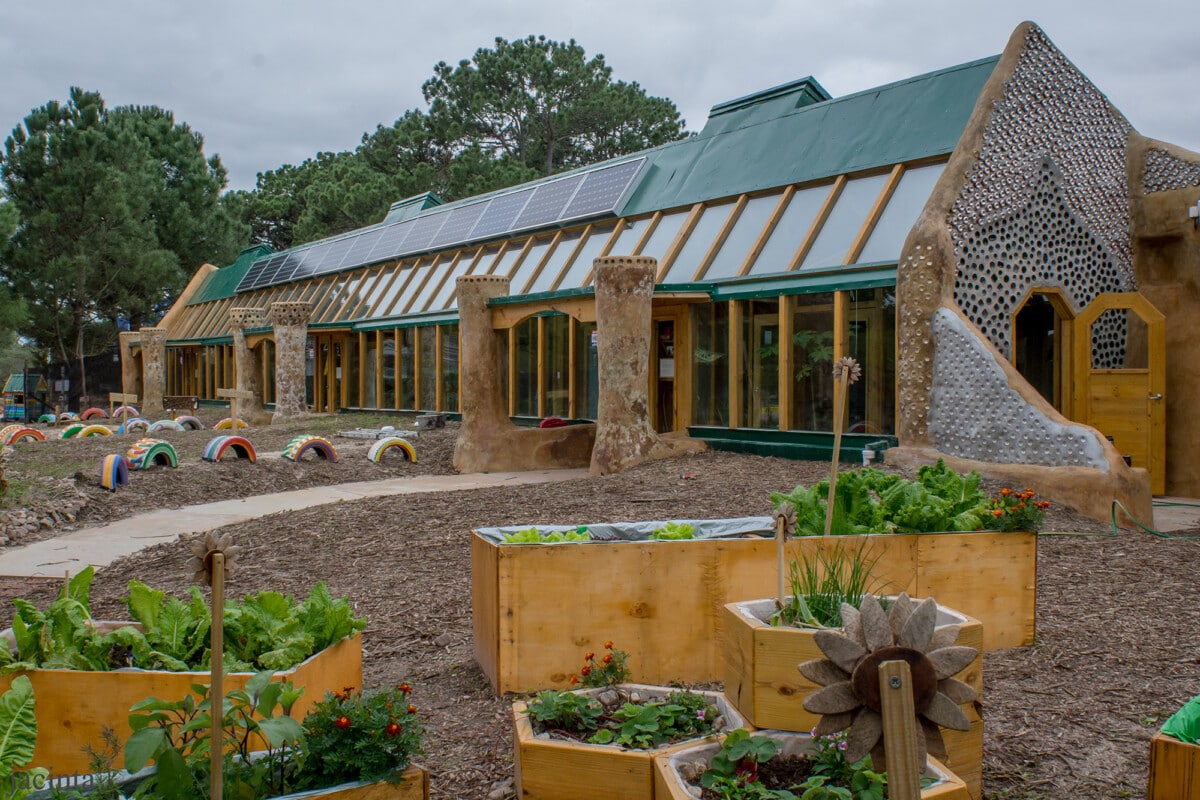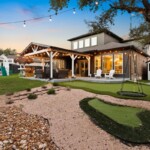As the world grapples with reducing the effects of climate change, people are looking to their homes for solutions. Investing in renewable energy by using solar panels or wind turbines is one option. Another is lowering the total amount of energy you use by switching to efficient appliances and using less water. Yet another method is by starting a home garden and using a living roof. But what if you could accomplish all of this with one house? You can with an Earthship home.
Earthship homes redefine sustainable living by bringing it to your home. With an Earthship, your entire house is lowering your carbon footprint and helping pave the way toward a sustainable future. This home style uses renewable energy, indoor gardening, on-site water treatment, and passive heating and cooling to be as climate-neutral as possible.
So whether you’re in the market for a new house in Wilmington, NC, or are looking to build a new home in Charleston, SC, this Redfin article has everything you need to know about Earthship homes. Are they right for you? Read on to learn more.

What is an Earthship home?
An Earthship home, or Earthship, is a type of sustainable home that is entirely self-sufficient and designed to have a minimal to no environmental impact. These unique homes are typically built using natural and recycled materials, and are designed to use the natural resources of their environment to provide all human needs. These include: food, shelter, energy, clean water, garbage management, and sewage treatment. Earthship homes are intended to allow people to live completely free from municipal utilities, sometimes called “off the grid.” The most common type of Earthship is the Global Model Earthship.
Earthship homes can function in most places around the world. However, because of their design and environmental requirements, Earthship homes aren’t right for all climates; they work best in seasonal, subarctic regions of the world. Tropical and bitterly cold areas are often not a good fit due to excess cost or overwhelming maintenance demands.
History of Earthships
Earthship homes were created by architect Michael Reynolds in the 1970s, around the time of the environmental movement and first Earth Day. Reynolds was concerned about the amount of trash in the environment and the lack of affordable housing, and wanted to create a solution.
Earthship homes promote personal autonomy, environmental responsibility, and affordability, aiming to provide sustainable housing for all. The first Earthship homes were built in New Mexico, and have undergone many design changes up to the present day.

Principles of Earthship homes
The Earthship concept has six design principles that are focused on eliminating the home’s environmental impact and promoting sustainable living.
1. Natural and recycled materials
Earthships are constructed using a variety of natural and recycled products. One of the most common materials is used car tires, which are packed with earth and then stacked to form strong, insulating walls. Other common materials include recycled cans, bottles, and reclaimed wood. This not only reduces the home’s environmental impact, but also gives them a unique and recognizable appearance.
2. Passive heating and cooling
Earthships are designed to take advantage of natural climates to provide a comfortable indoor environment without traditional heating or cooling systems. Earthships have thick walls typically made from natural and recycled materials, providing thermal mass which naturally regulates the indoor temperature. The buildings are also often partially covered with soil or even built into the side of a hill, which further helps stabilize the home’s temperature.
Additionally, Earthship houses are often oriented specifically to allow the sun to heat the interior during the winter, while using overhangs and other shading techniques to prevent overheating during the summer.
3. Solar and wind energy
Most Earthships are usually equipped with solar panels or wind turbines to generate electricity, making them independent of the conventional power grid. The electricity is stored in a bank of batteries and then used as needed for lighting, appliances and other electrical requirements. Inside, most homes have efficient appliances and LED lighting to help to reduce electricity use.
4. Water harvesting
Earthships capture and store rainwater and snowmelt from their roofs, making them ideal for fairly wet climates. The water is filtered and used for drinking, cooking, and bathing. After being used once, the water becomes greywater and is reused for irrigation. The remaining water is then treated and used for flushing toilets. After this, it becomes blackwater, which is then treated and used for landscape irrigation.
5. On-site sewage treatment
Instead of being connected to a municipal sewage system, Earthship homes treat their own waste water. Most homes accomplish this through a mix of greywater and blackwater systems. Greywater (water from sinks, showers, etc.) is typically filtered through indoor gardens and used to grow food. Blackwater (sewage) is usually treated in an anaerobic digester or a constructed wetland, with the goal of reusing it for landscaping.
6. Food production
A key part of Earthship architecture is self-sustaining food production. Earthship homes include internal greenhouses, which are used to grow a variety of plants, including fruits and vegetables. Greenhouses also aid in heating and greywater treatment. The combination of direct sunlight, greywater irrigation, and a controlled climate makes it possible to grow healthy food year-round. Some designs also incorporate outdoor garden spaces and even aquaponic systems.

Pros and cons of Earthship homes
In theory, Earthship homes offer reduced environmental impact without sacrificing many modern amenities. However, there are important pros and cons to consider before building a new Earthship house.
Pros
- Sustainability: Earthships are built largely from recycled and natural materials, which reduces their environmental footprint. They also incorporate renewable energy systems, water harvesting, and on-site waste treatment, which further enhances their sustainability.
- Self-sufficiency: Earthships are designed to be largely self-sufficient. They can generate their own electricity, collect and purify their water, manage their sewage, and even produce food. This reduces their reliance on public utilities and can provide security in case of a utility outage.
- Energy efficiency: The design of Earthships allows for natural temperature regulation, reducing the need for artificial heating and cooling. The use of solar and wind energy for power contributes to energy efficiency and further reduces the carbon footprint of the home.
Cons
- Regulations and permits: Because Earthships deviate from traditional construction methods, they can face challenges with local building codes and regulations. Obtaining the necessary permits can be a difficult and time-consuming process.
- Initial investment: While Earthships often save money in the long run through reduced utility costs, the initial investment can be high, especially when considering the cost of land, materials, and labor. However, construction costs are dramatically lower than a traditional house, and usually an entire community helps out.
- Labor-intensive: Earthship construction and maintenance can be labor-intensive, especially if using traditional Earthship building techniques, such as pounding dirt into used tires. This can add to the time and cost of building.
- Not suitable for all climates: Earthship homes are a financially viable and environmentally sustainable home style in most parts of the world, including dry, humid, and subarctic climates. However, they are impractical in warm and wet climates.
- Challenging to sell: Because of their unique designs, challenging upkeep, and typically remote locations, Earthship houses can be hard to sell. However, recently, they’ve been gaining value and are becoming a more popular option.
Earthship homes vs. earth homes
Earthship homes and earth homes (sometimes called earthen homes) are two home styles that are designed to reduce your carbon footprint. While they have similar names, they are often entirely different from each other. Let’s break this down.
Earthship homes are a style of home use entirely renewable, recyclable, and natural materials. They must adhere to a strict set of principles such as passive heating and cooling, renewable energy, and water harvesting. Some people use a significant amount of earthen materials during construction, but it’s not necessary.
Earth homes, or earthen homes, are homes that are built using a significant amount of earthen materials, often built into the earth, such as the side of a hill or buried underground. Importantly, earth homes don’t have to adhere to certain design principles and may not be as environmentally friendly as other home styles. However, many earthen structures are environmentally friendly.
Final thoughts
Earthship homes offer a unique and reliable way to reduce your carbon footprint, and are proof of the possibilities of sustainable architecture. While building and maintaining an Earthship can pose challenges, the rewards can be very rewarding. Exploring the potentials of Earthships invites people to reimagine their homes and see the part they play in slowing the effects of climate change.
All images are credited to Earthship Biotecture, founded by Michael Reynolds.



























 United States
United States Canada
Canada